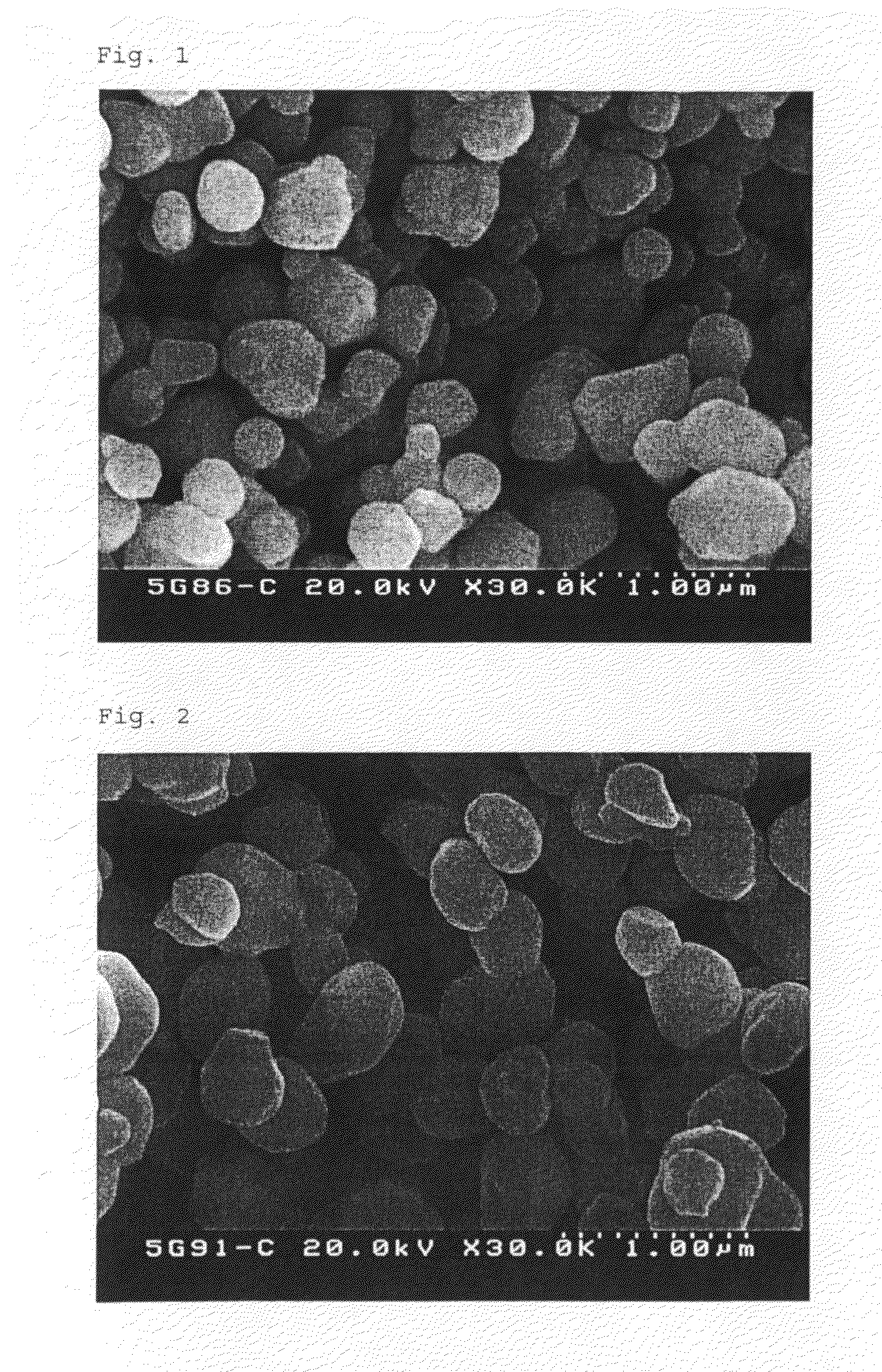Process for preparing barium titanate
a barium titanate and barium titanate powder technology, applied in the field of barium titanate powder preparation, can solve the problems of high capacity, high cost, abnormal sintering, etc., and achieve the effects of high crystallinity, high purity, and high capacity
- Summary
- Abstract
- Description
- Claims
- Application Information
AI Technical Summary
Benefits of technology
Problems solved by technology
Method used
Image
Examples
example 1
[0030]A dispersion (1.0 L) prepared by mixing metatitanic acid (0.5M) and anatase TiO2 (0.1M), and an aqueous 0.6M barium hydroxide solution (1.0 L) were employed as raw material. These two aqueous solutions were introduced to a SUS reactor with Teflon lining having 3 L of inner volume. After sealing the reactor, the reaction temperature was raised at a rate of 5.0° C. / min. By using an agitator on the top of the reactor, the reaction mixture was stirred at a speed of 300 rpm, and the reaction temperature was raised to 180° C., where the pressure was 10 Kgf / cm2. The reaction solution was maintained for 2 hours and then cooled. When the temperature of the reaction solution reached ambient temperature, the valve at the bottom of the reactor was opened to recover the reaction product solution, which was then spray-dried to obtain dry powder. The powder was placed in a hot furnace of atmosphere control type, and calcined with the flux of a mixed gas of nitrogen / hydrogen (2%) at a tempera...
example 2
[0031]The reaction was carried out under the same condition as in Example 1, but the calcining temperature was set at 1100° C. The powder recovered showed Ba / Ti molar ratio of 1.000 according to the analysis by using XRD, and the analytic result of k-factor by using XRD showed 7.3. As a result of quantitative analysis by using XRF, S content was 12 ppm. Specific surface area according to BET method was 2.9 m2 / g. As a result of analysis of particle shape and size by using FE-SEM, it was found that the particle shape was round and uniform without aggregation among the particles, and average particle size for spherical shape was 0.4 micrometer (see FIG. 2). The powder was formulated with X7R, and pressed into a disc having 10 mm of diameter and 3 mm of thickness, which was then sintered at 1320° C. The sintered density of the disc sample thus prepared was 5.82 g / cm3. After spreading In / Ga paste on both side of the sample and drying, the electric feature was analyzed. As a result, the p...
PUM
| Property | Measurement | Unit |
|---|---|---|
| temperature | aaaaa | aaaaa |
| temperature | aaaaa | aaaaa |
| temperature | aaaaa | aaaaa |
Abstract
Description
Claims
Application Information
 Login to View More
Login to View More - R&D
- Intellectual Property
- Life Sciences
- Materials
- Tech Scout
- Unparalleled Data Quality
- Higher Quality Content
- 60% Fewer Hallucinations
Browse by: Latest US Patents, China's latest patents, Technical Efficacy Thesaurus, Application Domain, Technology Topic, Popular Technical Reports.
© 2025 PatSnap. All rights reserved.Legal|Privacy policy|Modern Slavery Act Transparency Statement|Sitemap|About US| Contact US: help@patsnap.com



